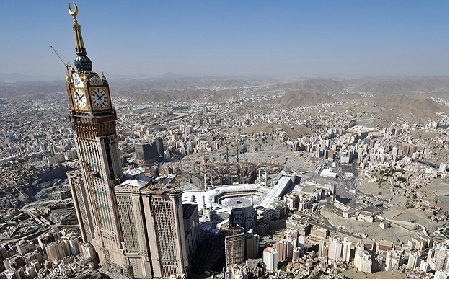RIYADH — Saudi Arabia is one of the fastest growing markets in built-assets among the world’s 30 highest grossing countries, according to EC Harris, a built-asset consultancy firm and part of the Arcadis company.
Based on findings of the Arcadis Global Built Asset Performance Index, Saudi Arabia is set to get a significant boost by 70 percent over the next decade due to the heavy investment in its “built environment”.
“Built assets such as good transport links, productive industrial centers and high quality residential and commercial properties all positively contribute to the economic performance of Saudi Arabia,” said Hisham Malaika, Head of KSA Partner and Head of Property and Social Infrastructure at EC Harris.
“Most of Saudi Arabia’s GDP is currently generated through its natural resources, but this research shows that this natural wealth is being invested wisely to drive economic growth from the built environment.”
Developed in conjunction with the Center for Economics and Business Research (Cebr), the Global Built Asset Performance Index illustrates how buildings and infrastructure contribute to GDP across the world.
The Global Built Asset Performance Index illustrates, for the first time, how Saudi Arabia compares to 30 countries which collectively represent 82 percent of global GDP.
The Index reveals that total built asset income within these countries stands at $27.1 trillion, amounting to 40 percent of total GDP. This figure is expected to rise to $28.1 trillion in 2014.
Saudi Arabia achieved low returns in 2013, but significant growth expected over next decade.
In 2013, buildings and infrastructure contributed 16 percent of Saudi Arabia’s total GDP, or just over $106 billion. When broken down per capita, this amounted to $3,690 per person, placing Saudi Arabia 24th in the overall index.
While this proportion is relatively low, Saudi Arabia is forecast to see a 70 percent increase in its built-asset income over the next decade, adding significantly to the country’s economic fortunes.
The top 10 nations on the Global Built Asset Performance Index by built asset return per person: Singapore — $29,480, Qatar — $20,630, United Arab Emirates — $17,470, United States — $17,460, Hong Kong — $16,340, Japan — $15,650, Canada — $5,430, Australia $14,050, Germany — 12,730 and France — 12,730
Saudi Arabia which is 24th in the list has a built asset return at $3,690 per person.
The report highlighted the contribution from the heavy investment in the country’s built environment in support of the 2025 Economic Vision.
Major projects such as the King Abdullah Economic City, rapid expansion of cities including Riyadh and Jeddah, the development of extensive rail transportation infrastructure and new water supply and distribution systems are all part of the plans for sustained economic growth.
“A key driver for this focus on economic diversification is demographic pressure. The country’s population is rapidly expanding, with 50 percent of the population currently under 28 years of age,” said Malaika.
“Rapid population growth is creating new social infrastructure demands for housing, education, health and public utility needs. If these demands are met, the dynamism created by a combination of growth in human and built assets should enable the country to achieve better returns in the future,” he added.
“Saudi Arabia has come a long way in a relatively short time and, is it diversifies away from a carbon economy, is on course for a prosperous future supported by its built asset wealth.”
Overall, China generated the highest returns from its built assets at $6.9 trillion in 2013. This is forecast to rise to $7.4 trillion in 2014.
Despite being the world’s largest economy, US built assets generated far less income at $5.5 trillion, although still well ahead of India and Japan in third and fourth place respectively.
The Eurozone countries have some of the highest built-asset wealth per capita, but returns are relatively low due in part to a higher proportion of income from services and other intangible sources also due to recent economic stagnation and overcapacity problems.
When compared to some of its peers, the UK has lower levels of built-asset wealth per capita, but does manage to extract a better than average economic return from its built assets relative to the value of the built asset stock.
“From our research we can see that countries face many different challenges in order to maximize the performance of their built assets,” said Simon Rawlinson, Head of Strategic Research at Arcadis. “While some countries are proactively managing their built-asset wealth to put them in pole position to reap the economic returns over the coming decade, others are in danger of failing to invest in their ageing built-asset base leading to a slow decline in their economic power. Sustaining a built-asset base that protects the environment, enables people to thrive and creates economic value is possible but a clear long-term vision to deliver this infrastructure is absolutely essential.”






0 Comments